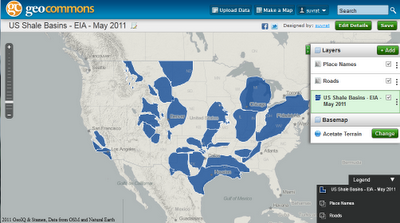Is there a connection between last year's discovery of
Denisovans and the recent surge in interest in the
Yeti. Last year a team of scientist found fragments of a human finger bone in a cave in the Altai region of Siberia. Materials dated in the cave indicate that these humans lived about 41,000 years ago. The surprise was when DNA recovered from the bone was sequenced and compared with living humans and Neanderthals. The differences in the DNA sequence suggested that these fossils represented a distinct human population, as different from living humans as we are from the Neanderthals. They were called the Denisovans after the area where these remains were found.
What is the story of the origins of these Denisovans? After the origin of our genus
Homo in Africa around 2 million years ago, humans from time to time migrated out of Africa. Descendants of one such migration around half a million years or so evolved into the Neanderthals in Europe and the Denisovans in East Asia. These were long lived populations. Within Africa too there were probably different varieties of humans. We
Homo sapiens evolved from one such population and when members of
Homo sapiens migrated out of Africa around 75 thousand to 50 thousand years ago they would have encountered and interacted with the Neanderthals and Denisovans. Did we interbreed? The answer is most likely ..yes. Genetic analysis now strongly suggests that both Neanderthals and Denisovans have left a small but distinct genetic legacy in us.
The status of Neanderthals and Denisovans as separate species of humans now stands challenged. They had certainly evolved into a distinct variety of humans, much more different than the differences seen between the broad groups of living humans. But not enough so as to prevent them from successfully interbreeding with a population (us) they confronted after a few hundred thousand years of separation.
The Yeti off course would be the ideal candidate to imagine a still living Denisovan population in the isolation of Siberia. The ecology described historically for the Yeti includes remote mountainous regions, caves, cold weather, temperate forests.. landscapes that also describe one of habitats of the Denisovans, although the Denisovans probably had a range that include the tropics too.
Stories of a mysterious human-like creature wandering the wilds are part of the mythology of many cultures. Such a creature thought to be living anywhere from Tibet to Siberia has been called the Yeti. Now, Russian scientists a year after the sensational discovery of the Denisovans have found
"irrefutable" evidence of the Yeti in the form of impressions on the ground and some hair and a supposed bed from a setting uncannily similar to the Denisovan fossils.... In the cold of Siberia in a cave surrounded by temperate forests.
I can't help thinking that the Denisovans more than prompted this latest "evidence" of the Yeti.
The Yeti has always been thought of and pictured as a brutish sort of a creature. It is usually described as a bipedal ape, hinting at its proto-human like character. One famous picture of the Sasquatch (the Yeti's equivalent in north America) shows a hairy gorilla like creature turning its head to face the camera. The Yeti in East Asia has also been described as big and hairy. It has traditionally been a creature which has been emphasized to be more "primitive" than humans but occasionally with some redeeming qualities. In
Tintin In Tibet (
Picture Source), the Yeti saves and looks after Chang, a Chinese boy who is a survivor of a high altitude Himalayan plane crash.
These depictions of the Yeti may be a reflection of how we thought and maybe still do about archaic populations of humans. They were thought to be separate species. Different from us reproductively. We didn't breed with them. There was no intimacy between us. They were sub-human. The Neanderthals for long were considered primitive dumb brutish cave dwellers whom we superior modern humans drove to extinction. We were wrong about that. As we learn more about Neanderthal society that perception has changed over the last couple of decades. And now we know that all of us are part Neanderthal and part Denisovans.
Will our description and iconography of the Yeti change to accommodate this new understanding of human evolution? Now that we understand that there is a continuity and not a chasm between us and other varieties of humans who lived on earth, will we depict the Yeti as a less grotesque, less intimidating, more empathetic social creature, and not the one solitary ape roaming the expanses of Tibet and Siberia. Will the Yeti become more human and less beast? Will science guide this particular theater of science fiction?
Will the Yeti become no more abominable, but just an ancient snowman?

















